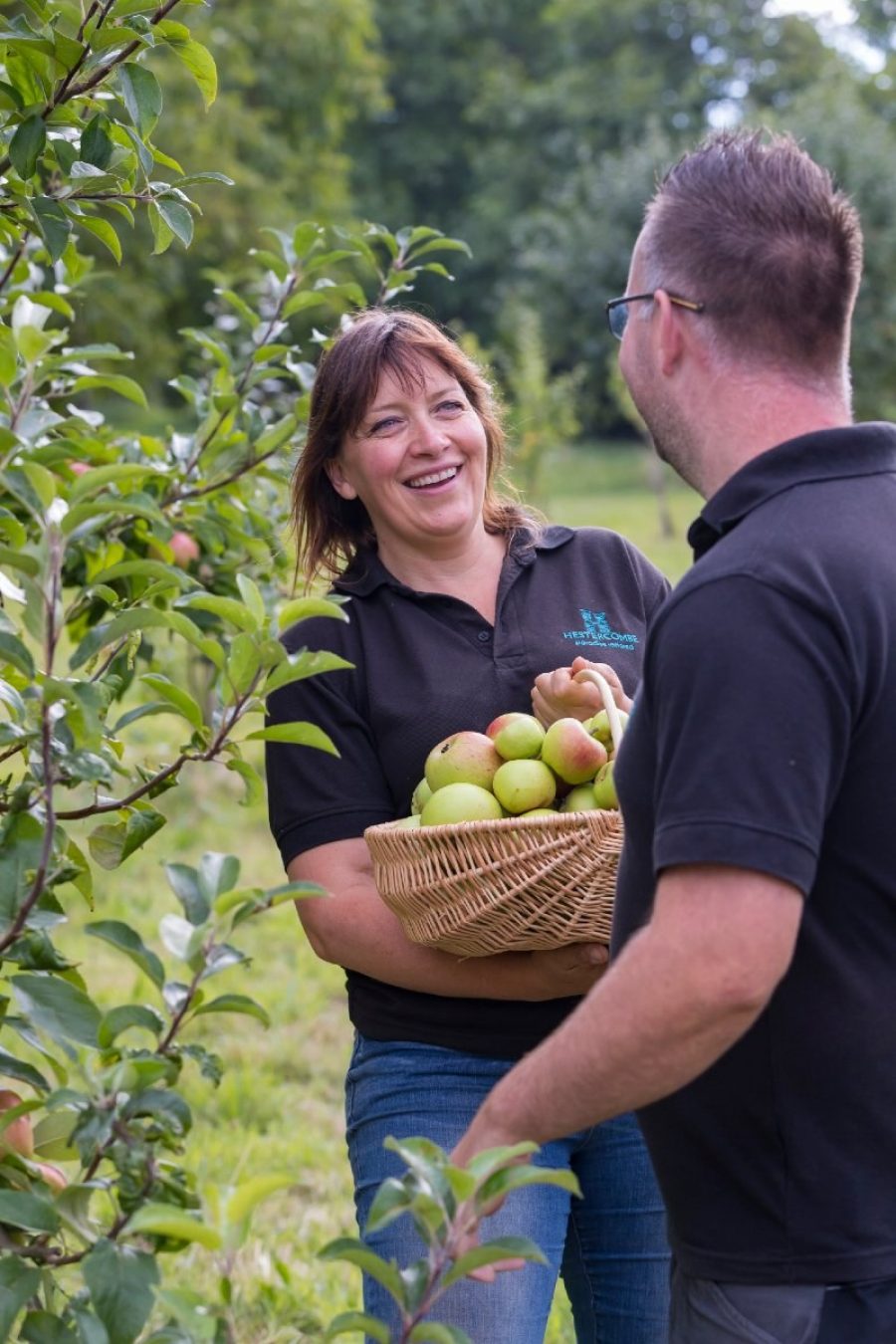
The first rule of apple pruning is... don’t worry, it’s not that hard and it’s unlikely that you will kill the tree!
The second rule is... use sharp tools!
Keep in your head the reason why you are pruning. This is to maintain the health of the tree, to control the shape or the size of the tree, and to encourage flowers, and therefore fruit.
Sometimes when you pick up a book about pruning apple trees it can seem really complicated and serious but remember you are not running a commercial orchard. You're just looking after trees in your garden. Yes, you’d like some nice apples from it, but your income does not rely on your yield - so relax!
When to prune
Pruning takes place when the tree is dormant. This means you can do any time after it has lost its leaves and before it starts to bud - so from around November to March.
Why do we prune?
Plants want to grow and stretch to reach sunlight and they use up a lot of their energy in doing so. By pruning branches it means that the energy that was being used to make that branch grow can be
redirected and can instead encourage growth in the buds. The tips of the branches hold all the auxins (plant growth hormones) so once you remove the tips they put their energy into the next growth area – the buds.
Step 1: where to start
The best way to start is to have a good look at the tree. Remove any dead branches. Then remove any branches that look as though they may be diseased or damaged. Apple trees are prone to fungal diseases especially down here in the South West where our climate is wet and mild. You can help reduce this by creating good air flow around its branches. You want to create a wine glass shape, so any branches that are growing back into the glass can also be removed.
That’s your basics done. And if you have an old tangled tree that might be enough for one year. It is wise not to remove over one third of the tree - if you do too much work all at once the tree will respond in panic and will send out lots of water shoots. You’ll spot these, as they're the ones that grow straight up vertically off the main branches where limbs have been removed. If you have these, leave them until the summer to remove.
Step 2: find the leaders
Otherwise your next move is to look at each main branch and find ‘the leader’. This is basically the strongest branch growing out from that main stem in the right direction. When you look closely at this branch you should be able to identify this year’s growth. If you follow the branch down from the tip you will notice a knobbly bit and you will notice a colour change in the branch. That is where this year’s growth begins. Having found this year’s growth, then look back down the branch with the intention of cutting off one third of this new growth. You need to cut just above a bud and ideally you want your bud facing outwards. Whichever way the bud faces is the direction that the new branch will go.
Carry on doing this to all your leader branches.
All the other branches coming off from that stem are called laterals. All the new growth on the laterals can be cut back to 2-3 buds. In time, and with regular pruning, these will become your fruiting spurs - meaning more fruit!
Step 3: health check
Whilst you are at the tree it is worth taking the time to look at its health. Look at the base of your tree. If there are new shoots coming from there they will need to be cut off. Does your tree have a stake? Has the tree tie become too tight or need replacing? Does the tree still need a stake? It’s worth removing any fallen leaves from around your tree in case it has overwintering pests hidden in there. If you have old rotten fruit on the tree this is best to remove. If you have a young tree it may be worth removing grass from its base. And while you are here why not give the tree a good feed of either blood, fish and bone or seaweed feed so that it is prepared and energised to get flowering and get fruiting.
Happy pruning!
Please help us keep Hestercombe open
Over the last 30 years Hestercombe’s historic landscape and its unique, world famous gardens have been lovingly restored.
However, Hestercombe’s closure due to the Covid-19 pandemic has had a devastating impact on Hestercombe Gardens Trust’s finances. We’re an independent charity without the safety net of larger organisations, and we must now raise substantial funds to ensure Hestercombe continues to thrive and to help secure its magnificent heritage for future generations.
We would be incredibly grateful for any donation that you are able to give. Thank you.
Gift Aid
If you are a UK taxpayer and you select ‘Please Gift Aid this donation’, the UK Government will give Hestercombe Gardens Trust an additional contribution of 25% at no extra cost to you.
